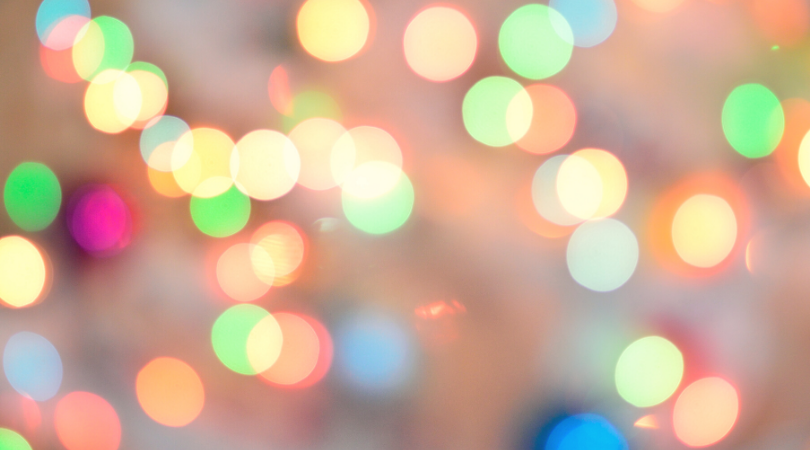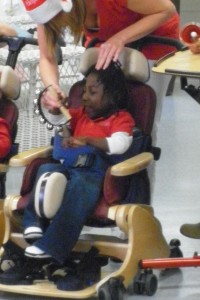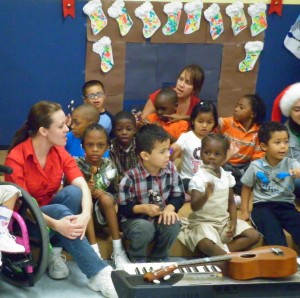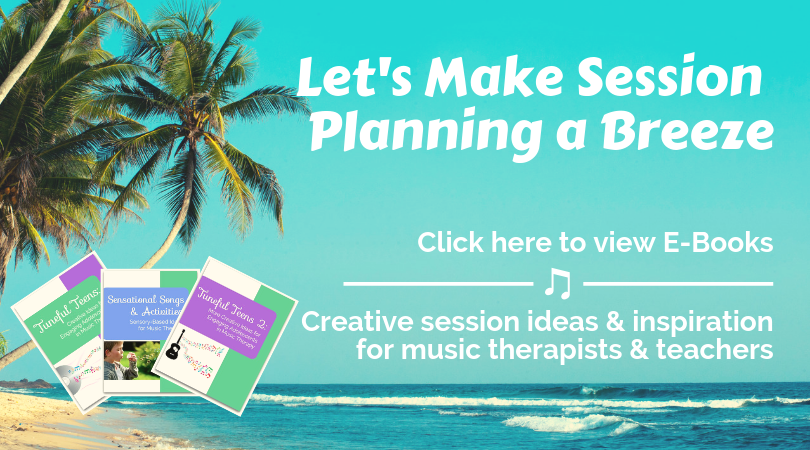
Wednesday December 14th was our holiday spectacular show at United Cerebral Palsy (UCP) Miami! We had a fabulous turnout from the families and the children sang so well! Here was the lineup for the show…
“Do You Hear What I Hear?”
Alex’s class – children ages 4 – 6 with severe & profound intellectual disability
I changed the words to this familiar carol to make it a sensory-based song:
“Do you hear what I hear? A bell, a bell, ringing in the night.
Santa’s sleigh is on its way here. Santa’s sleigh is on its way here.” (children play jingle bells)
“Do you hear what I hear? A drum, a drum, little drummer boy,
He’s come to play his song for all. Come to play his song for all.” (children play the drum)
“Do you see what I see? Lights, lights, red, and blue, and green,
They will shine for all to see. They will shine for all to see.” (Christmas lights are placed on their laps and over their heads)
“Do you see what I see? A reindeer, a reindeer, prancing through the night,
He will show Santa the way. He will show Santa the way.” (pass around a large stuffed reindeer)
“Do you feel what I feel? A hat, a hat, Santa’s red hat,
It is velvety and soft. It is velvety and soft.” (pass around a Santa hat for children to feel)
“Do you hear what I hear? A sound, a sound, voices in the night,
Saying Christmas wishes to all. Saying Christmas wishes to all.” (program voice output device to say “Merry Christmas!”)
“Chinese New Year”
Jenny’s class – children ages 4 – 6 with severe and profound intellectual disability
I would like to thank the fabulous ladies of Mundana Music Therapy, as well as their former intern Hilary Yip for sharing this idea. Although Chinese New Year isn’t celebrated until January, there is one student in this class who is Chinese. I thought it would be nice to celebrate his heritage at our holiday spectacular. Here’s how we organized the song:
Group 1: children play C, G, or high C on hand bells with hand over hand (HOH) assistance
Group 2: children play cymbals with HOH assistance
Group 3: children play drums with HOH assistance
Group 4: children play gong with HOH assistance
Each group took a turn to play as follows:
Group 1 plays while I sing: “Happy Chinese New Year, Gong Hay Fat Choy, May you prosper, year of the dragon”
Group 2 plays while I sing: “A lion dance to bring good luck, a dragon dance to bring good luck, red to bring good luck, a feast to bring good luck”
Group 3 plays while I sing: “Happy Chinese New Year, Gong Hay Fat Choy, May you prosper, year of the dragon”
Group 4 plays while I sing: “A lion dance to bring good luck, a dragon dance to bring good luck, red to bring good luck, a feast to bring good luck”
ALL play while I sing: “Happy Chinese New Year, Gong Hay Fat Choy, May you prosper, year of the dragon”
End with gong strike!
“The Santa Song”
Deborah and Maria’s Class – children ages 3 – 5 with autism & other special needs
This is an original song where the children sing and act out a little scene. One child was chosed to be Santa. Deborah’s class dressed up as elves and Maria’s class dressed up as reindeer. Here’s how the song goes…
“Santa is looking for his reindeer (children put hand to brow and pretend to look)
Santa is looking for his reindeer
It’s Christmas Eve so where could they be? (children put arms out in questioning form)
He looks this way and that way (children put hand to brow and pretend to look)
He looks this way and that way
Santa is looking for his reindeer where could they be?” (children put arms out in questioning form)
“Those reindeer stomp their feet (children stomp their feet)
Stomp, stomp, stomp
They stomp their feet (children stomp their feet)
Stomp, stomp, stomp
They stomp their feet and say ‘Here we are!’ (raise hand in air)
Santa says ‘Ho, ho, ho! Here we go!”
(Repeat for elves; elves clap hands)
“Feliz Navidad”
Hilda and Paola’s Class – children ages 4 – 6 with autism & other special needs
The children sang the Christmas classic, “Feliz Navidad”
“Umoja”
Hilda and Paola’s Class – children ages 4 – 6 with autism & other special needs
Umoja is one of the seven principles of Kwanzaa, and it means “unity.” I brought in library books about Kwanzaa and taught the children about the very basic concepts of the holiday. We talked about what unity means and their children drew pictures of their family, to tie in the theme of togetherness and unity. I found a funky beat on the keyboard and taught the children the song “Umoja” with sign language…
“Umoja means unity (sign for ‘unity’)
You and me (sign for ‘you’ and ‘me’)
Living together in one (sign for ‘one’)
Big family (sign for ‘family’)
Umoja! (clap, clap, clap) Umoja! (clap, clap, clap)
Umoja! (clap, clap, clap) Umoja! (clap, clap, clap)
Hand bell Choir: “Jingle Bells”
Children played rainbow hand bells using color coded notation.
Band: “I Hear the Bells”
Our band consisted of: ukulele, piano, hand bells, and a singer.
All instruments played following color coded music notation: C chord (red) and G chord (blue).
Sing-a-long!
“Jingle Bells”
“Deck the Halls”
“Here Comes Santa Clause” – this led to Santa coming in to visit the children and give each one a gift!
It was a fantastic, festive day! What are YOU doing for your holiday performance this year?





When I Googled my name, it led me to your site because of the Chinese New Year song I wrote! I am so excited that you used it with such a fun musical arrangement. Thank you for the reference!
How cool that you found it by Googling yourself! Thank you for sharing your song – it was definitely a hit!